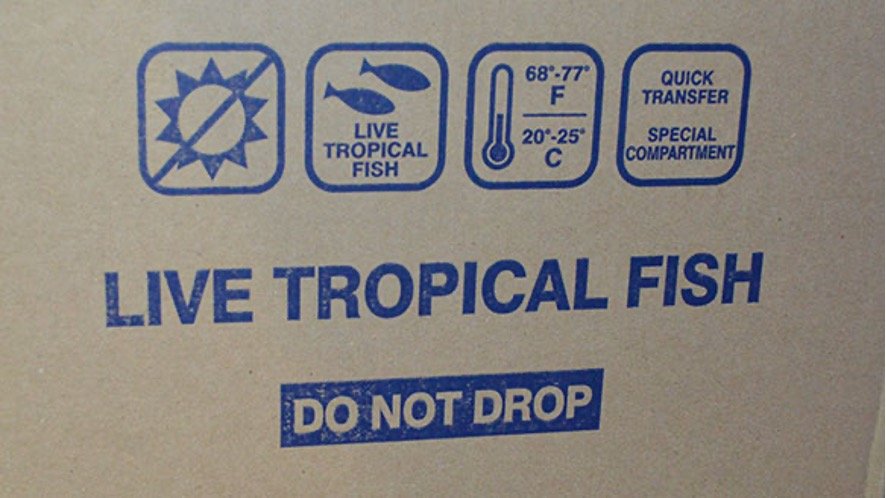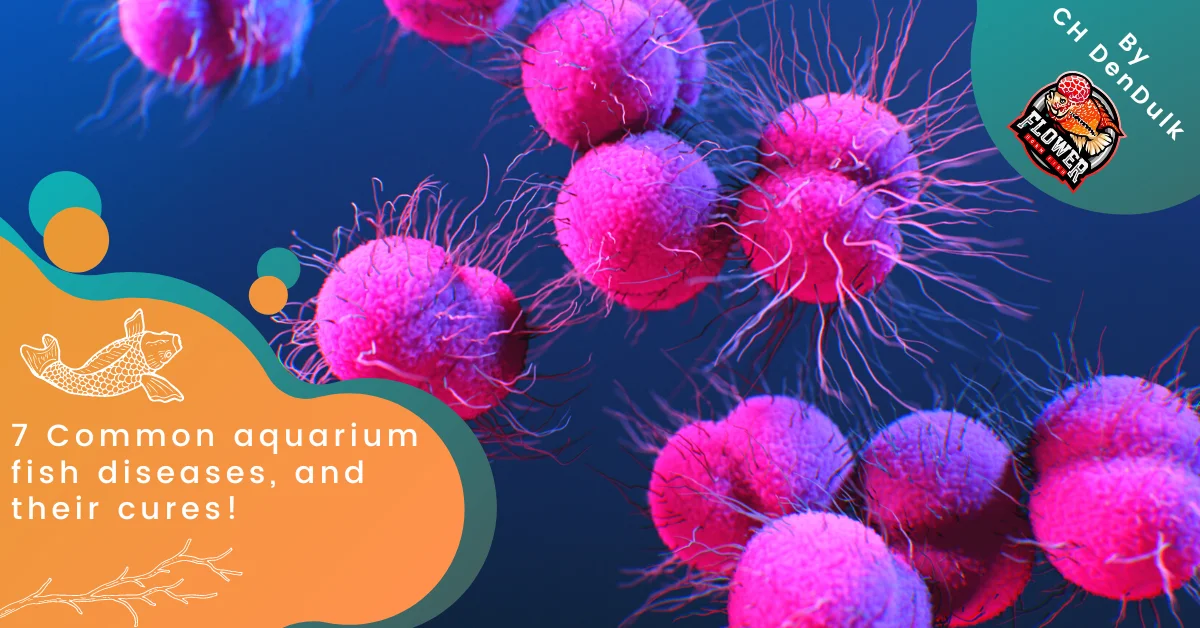
Your doorbell chimes and your cell phone pings and you realize your Checkers 60/60 order has just arrived. Doing your grocery shopping in your pyjamas is starting to feel strangely normal right?
It is no secret that South-Africans are becoming more comfortable with buying online. The Covid pandemic has accelerated this natural evolution even though we are far behind places like the USA, Asia and Europe…but we are catching up fast. But what about buying FISH online? Crazy? Actually not!
As you read this there are hundreds of boxes and packages whizzing around the country with precious fishy cargo on their way to a new home. Most pet shop’s fish stock is shipped to them from all over the Globe landing in the country via airfreight. Sending plants and shrimps is even easier as they travel even that much better.
In light of this phenomenon we thought it would be a good idea to list a few simple tips to buying fish online:
1. Research the type of fish you want before you buy it
Traditionally one would visit your local pet shop and get advice from the staff or owner on what fish and plants would work best in your personal tank set-up. Unfortunately, this is not always the case and sometimes inexperienced staff are all too happy to sell you a fish without asking you the necessary questions before your purchase. A cute baby red tailed catfish will grow so large most people’s pools are not big enough to house the thing when fully grown. Discussions around your tank size, or if your bio filter is properly cycled and questions about what other tank mates’ you plan to keep are also very important to avoid fish compatibility issues.
Shopping online is different as a lot of this research will be up to you. Fortunately, the internet is not short on information, however you should be critical about what you read. Don’t rely too heavily on opinions posted on Facebook or fish groups, rather watch Youtube videos from established fish experts. Read articles from established pet stores or hobbyists. Basically you will need information from experienced and credible sources which are factually supported
On the My tanklife platform we encourage our sellers to make their listings as detailed as possible to help you with this. If you are unsure, please make contact with them. All store pages have a contact form where you can ask them relevant questions. My Tanklife administration is always casting a watchful eye over the process, and to follow up on anything unanswered or to help you where we can. Furthermore, each product has a button “ask owner” which links you directly to their store contact form.
2. Know the fishes ‘husbandry?
Definition husbandry : “the care, cultivation, and breeding of crops and animals.”
Paying for a neon tetra at R20 is fine, but when you need a school of 30 tetras, things start to add up.
We understand that many hobbyists are always trying to find the best deal on the fish that they need, however you should do your homework before buying. With online purchases it becomes even more important to know the ‘husbandry’ of your purchase, and what settling and quarantine process your fish has undergone, before buying it. With buying online this is not usually apparent especially because you can’t necessarily have a chat to the owner or observe the fish swimming around the tank. Why not ask the seller for a video clip of the fish while feeding to counteract this issue!
As already explained, most fish sold in South-African stores are imported, some may be sourced from local breeders. No matter the origin the correct settling process to be followed for any fish before it is made available for sale is the following:
- Settled in a holding tank and observed for a period.
- Medicated if necessary and treated for parasites.
- Checked for proper feeding. If not, the seller needs to try a few tricks to coax the fish onto prepared foods.
This whole process may take several weeks and requires time, money and effort. This is particularly important for wild caught fish as they often carry parasites which need to be controlled, and they do not always readily take prepared foods. Most well-run pet shops/fish sellers will only sell fish that have completed this settling process. Naturally these fish will be more expensive with the overheads that have to be recovered. A fish that has followed this process however has a much lower risk of death in your tank and this becomes especially important if you are purchasing rare and expensive fish which are in high demand. It becomes worth spending the extra money on quality.
It is possible to purchase a fish at any point along this value chain, however if you do, it is important to know the risks. We would only advise experienced fish keepers to buy fish via direct imports where the settling steps described above will be up to you.
Ultimately it will be for you to find the right balance of what cost benefits you are comfortable with. Nevertheless, we would still strongly advise all fish to be quarantined no matter their origins.
On the My Tanklife platform we may have vendors selling fish along various points of the value chain. Please check the seller’s listings carefully so that you are informed. When in doubt simply ask us the question.
3. Plan for delivery
A fish seller aims to get your shipment to you within an 18 hour period. If packaged correctly, the risk that you have fish losses is very small within this time frame. It is therefore vital not to cause any unnecessary delays from your side. DO NOT make plans over the time your package is expected to arrive unless someone can assist you to take delivery. If a courier cannot gain access to your property or no one is home, the fish will be taken straight back to the warehouse and…. who knows how long it will take for them to return. ?? There is no guarantee they will be back in time.
If you live in a remote area, rethink your shipping address and rather put the address of the local courier kiosk in town. Some towns have a collection point for packages at the local Co-Op for example. This will make delivery faster and easier for the courier and more cost effective for you as well. Very remote areas often carry a hefty delivery surcharge and the last thing one wants is for the courier to get lost and waste precious time.
Your fish will arrive in an air filled bags packed in a cooler box. Take the bag out and place in your tank to start equalising the temperature as soon as possible. We will write another article on proper acclimatisation techniques.
4. Check the seller’s terms and conditions or “DOA” policy!
Read the seller’s terms and conditions carefully. My Tanklife encourages our sellers to be strict but fair with their policies. In most cases a fish seller will not offer exchanges on livestock however there should be a policy on replacement or refund if something goes wrong with the shipping within a certain timeframe. It is not impossible that things do go wrong, which is beyond the control of either the buyer or the seller.
There are some important things to do if your fish did not make the journey and arrives “DOA” or dead on arrival :
You will need to take a video clip and pictures of the bags within 1 hour of receipt and send this to the seller. The seller will then make arrangement for a refund or replacement.
Most seller’s shipping policies will have the condition where they only dispatch livestock packages from Monday to Wednesday. This is to avoid the situation where a package stays in the warehouse over the weekend. This would certainly be the end of the precious cargo’s chance of survival. This does not imply however that you can only order on those the above-mentioned days!
5. Give feedback
Don’t forget to write a review of your shipping experience. The seller’s are eager to know if your fish was received in good order and settled into their new home well. Your reviews give valuable feedback on what went well or what could be improved upon. This helps the seller’s and the My tanklife platform grow and self-correct if necessary. Each seller has a page to review their store and we will send out a link to this page after we have received proof of delivery. We may also make direct contact with you after your purchase for your feedback.
Conclusion
As is evident, buying fish and especially aquatic plants and other livestock online is becoming the new normal and is already happening all over the country. By following these simple buying fish online tips you will be well positioned to find some very special items for your tank from the comfort of your own home. Enjoy this wonderful hobby, and Happy Shopping!!!!









